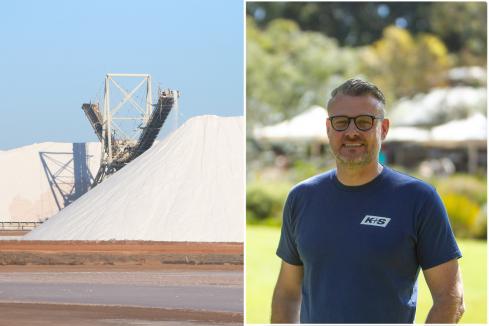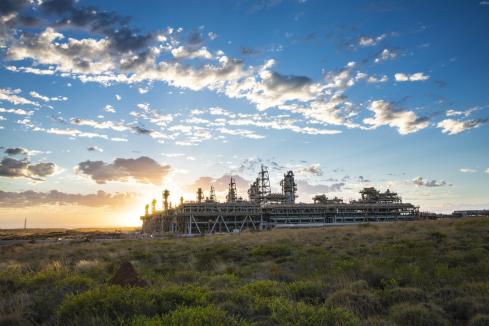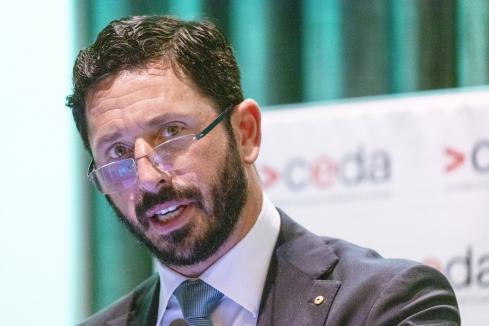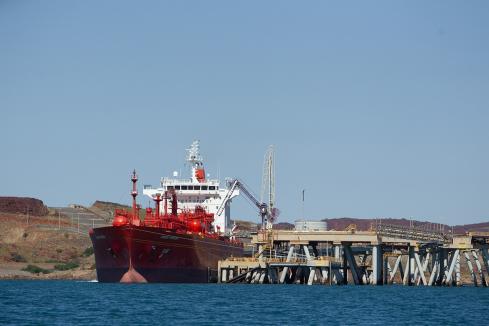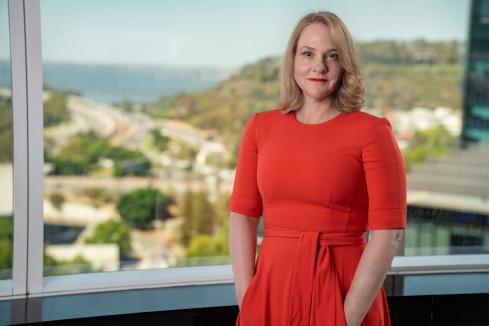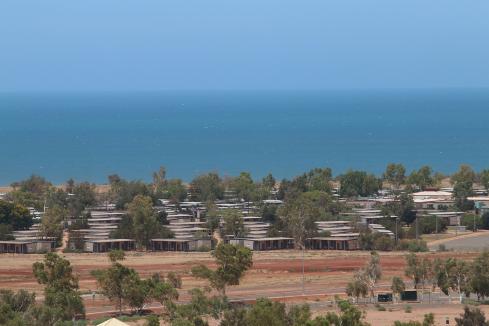Australian liquefied natural gas projects can continue to be competitive against new developments planned for the United States, Canada and east Africa, industry consultant RISC has found.


Australian liquefied natural gas projects can continue to be competitive against new developments planned for the United States, Canada and east Africa, industry consultant RISC has found.
The RISC analysis challenges claims that new LNG developments, particularly in North America, would be able to deliver gas much cheaper to key Asian markets.
“Australia’s capital costs are high but that’s not the whole story,” RISC principal advisor Martin Wilkes told a major projects conference in Perth this week.
“There will be competition from elsewhere but don’t underestimate the problems they are going to face as well.”
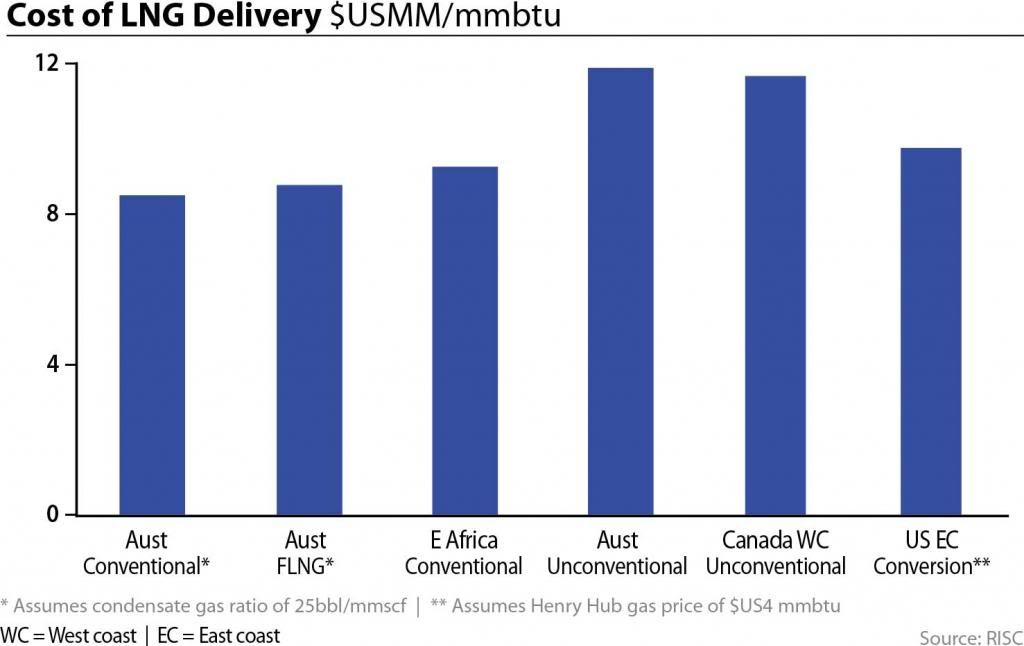
Mr Wilkes said he anticipated more Australian LNG projects would be approved, beyond the current wave of activity that includes the Gorgon, Wheatstone and Prelude projects in WA, the Ichthys project in Darwin and three coal seam gas projects in Queensland.
He emphasised that each project faced unique challenges.
Mr Wilkes said the upfront cost of building LNG projects was just one factor in determining their competitiveness.
The coal seam gas projects in Queensland, for instance, have a lower initial capex requirement (compared to traditional gas projects) but need to continue drilling wells to maintain production.
“They drill more wells and they have to build more infrastructure to deliver the gas, so you get continued capex and increasing opex through the life of the project.”
US projects are (in most cases) just adding liquefaction trains to existing infrastructure, but have other costs.
“They have to buy their gas, so that’s where the difference comes in. Some have a tolling arrangement, but the impact is the same.”
Distance to market is another factor.
The Pilbara is about 3,700 nautical miles from the key markets of North Asia, and Canada’s west coast is similar.
In contrast, the distance from the US gulf coast is about 9,000 nautical miles.
That assumes large LNG tankers will be able to use the Panama Canal, which will only occur when a major expansion – currently subject to cost and schedule issues – is completed.
“That translates directly to cost. The cost of transporting LNG from the US Gulf coast to North Asia is significantly higher than from Australia.”
Mr Wilkes said another positive for WA projects was their much higher ‘liquids’ content.
“They are pretty valuable and add a revenue stream to the project.
“Unconventional gas and what we know of the projects off the east African coast are dry, with pretty much no liquids.
“When you put all of that into the mix, and look at the cost of supplying into China, there may not be that much difference in terms of competitiveness of Australian projects and the rest of the world.”
Mr Wilkes said the coal seam gas projects in Queensland would be near the top of the cost curve.
“The Canadian unconventional projects will be quite expensive as well, and that’s probably why none of them have been sanctioned yet.”
Mr Wilkes said there continued to be a high degree of uncertainty surrounding approvals for projects in other jurisdictions, including the US.
“It’s coming from both directions; will the US allow that amount of gas to be exported and will the importers want to bring in significant quantities?
For instance, he said South Korea might limit the amount of gas sourced from US shale projects to 20 per cent of its total imports.
Mr Wilkes said an underlying factor supporting new projects was strong growth in LNG demand.
“They will face increased complexity in the market and undoubtedly pressure on price because of the impact of US sales, but that doesn’t mean they can’t get their projects over the line,” he said.
“They might need to sharpen their pencils and lift productivity but don’t write off Australian LNG.”
US project pipeline
The US is home to many aspiring LNG export projects, but to date only one has been sanctioned and commenced construction.
Private equity-backed Cheniere Energy started construction of its Sabine Pass liquefaction project in August 2012, starting with two production trains.
In May 2013, it authorised contractor Bechtel to start building trains 3 and 4, lifting total capacity to 16 million tonnes per annum – similar to the planned production at Chevron’s Gorgon project.
Cheniere is seeking regulatory approval for two more production trains at the Louisiana site.
Like most US projects, it involves the conversion of a gas import terminal to an export facility, and will tap into the rapidly expanding shale gas production in the US.
The same company is behind the Corpus Christi project on the Texas coast, which will have up to three LNG trains.
US projects require approval from both the Department of Energy, which assesses whether the gas exports are in the national interest, and the Federal Energy Regulatory Commission, which assesses safety and environmental effects.
Five projects are awaiting FERC approvals this year after getting DOE export approval (which in many cases comes with conditions).
These include the Cameron LNG project in Louisiana, which is jointly owned by Sempra Energy, GDF Suez, Mitsubishi and Mitsui & Co.
Cameron LNG this month awarded engineering firms CB&I and Chiyoda a joint $US6 billion contract to build the 13.5mtpa facility, subject to final regulatory and investment approvals.
CB&I, in joint venture with Zachry Industrial, has also picked up a contract to build the Freeport LNG project in Texas.
Freeport LNG, which is backed by Conoco Philips, Osaka Gas and Dow Chemical Co, has a design capacity of 8.8mtpa.
Another advanced project is Dominion’s Cove Point LNG development, located on the coast of Maryland.
Dominion has contracted IHI and Kiewit to build its 5.25mtpa liquefaction plant, which has attracted community and environmental protests.











